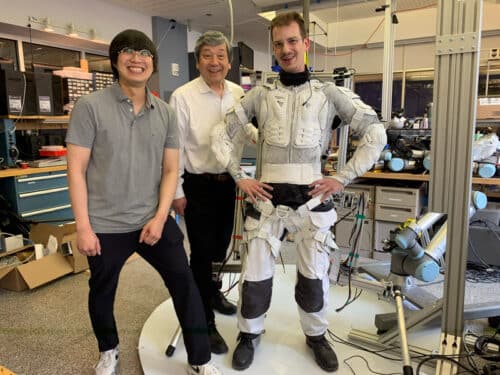MIT researchers are developing “SuperLimbs,” wearable robotic limbs that support astronauts and help them stand after falling.

Credits:Photo: Jennifer Chu
Are you looking for a light-hearted break? Check out videos of astronauts tripping on the moon. The slow-motion footage of Apollo astronauts stumbling as they navigate the lunar surface is amusingly relatable.
MIT researchers are developing a pair of wearable robotic limbs, known as Supernumerary Robotic Limbs or “SuperLimbs,” designed to help astronauts by physically supporting them and assisting them in standing after a fall. These limbs extend from a backpack that also houses the astronaut’s life support system and the controller and motors needed to operate them.
Researchers have developed SuperLimbs, robotic limbs that help astronauts stand after falls. In tests with subjects in spacesuit-like garments, SuperLimbs proved effective at easing the effort of rising from a sitting or lying position. This technology is especially relevant for NASA’s Artemis mission, where astronauts will build the moon’s first permanent base, demanding extensive physical exertion.
Taking a stand
The team studied how people naturally stand up after falling by observing volunteers without and then with a suit that mimics the stiffness of an astronaut’s spacesuit. Volunteers attempted to rise from lying on their side, front and back. Despite wearing the restrictive suit, their movement sequences remained consistent but required significantly more effort. The team mapped these movements, noting that each volunteer moved through a predictable sequence of poses to stand up.
Helping hand
The team developed software to guide a robotic arm attached to a backpack, designed to help people stand by supporting their movements. Volunteers, fitted with a bulky suit connected to this backpack, were asked to lie down and stand while the robot adapted to assist them. The tests demonstrated that the robot significantly eased the effort of standing compared to doing so unassisted in the suit. This success has led to plans to incorporate this technology into the latest SuperLimbs version, which features dual robotic arms and integrates essential systems like battery and ventilation in the backpack.






